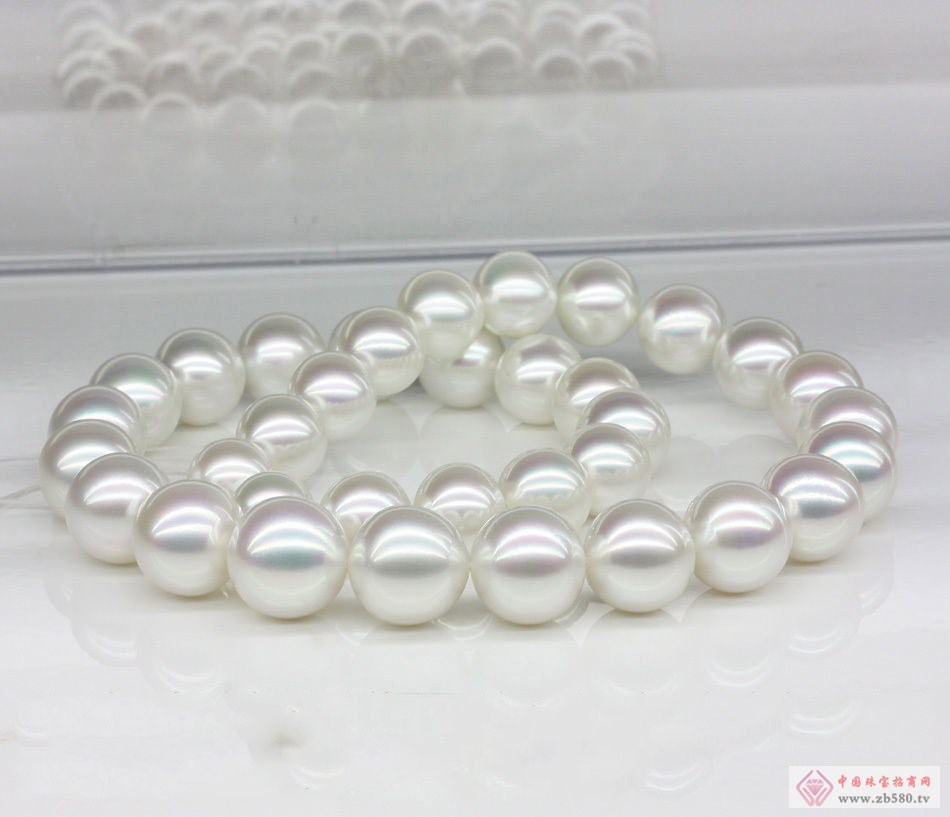The growth process of Nanyang pearls
Pure and micro-rich waters, calm and calm bays ensure that the pearls placed on the seabed live healthy for at least six years of cultivation, ensuring that the surface of Australian South Sea pearls is round and smooth without any impurities. Its unique silver-white transliteration is dazzling, making the owner who wears it stand out in the grand stage of the jewels. What is especially special is that it has a layer of shimmering light above the silver light, glamorous and mysterious. Australian South Sea pearls are generally 10 millimeters in diameter and can be as large as 16 millimeters. Since the breeding cycle of each pearl is more than two years, it is guaranteed that the pearl's bead layer is thicker, and it will not be taken as a few months of abruptly profitable businessmen to take the beads so that the bead layer is thin and easy to peel off.
Color choice
The beautiful luster of Australia's Nanyang pearls is natural. It does not have to rely on bleaching and dyeing for artificial processing like other pearls. Therefore, there is no such thing as "human old yellow" due to the deterioration of bleach. This is where its value lies. The cultured mother-of-pearl of South Sea pearls are hermaphroditic, which means that they can change sex when needed. White butterfly can be male for 6 to 8 years and then become female. 30% to 40% of mother-of-pearl can have this change. In the summer, when the water temperature in the northwestern coast of Australia rises to about 29'C, the white butterfly shell begins to ovulate. The sperm discharged from the male shell and the scorpion discharged from the female shell meet in the water and complete the insemination. The larvae grow in 8 hours and drift in the tidal water for the next three weeks, then become younger shells sinking to the bottom of the sea.
At this stage, they already have two small shells. The larvae can wander around until they hit some suitable objects, such as corals, shells or stones, and then attach them with their feet. In the first year, they can grow to 35 to 80 mm. The second year can grow to the muscles to 140 mm. In the third year, they matured and grew to 170 to 200 mm. Mother-of-pearl can live for 20 years, and individual can live longer.
The mother-of-pearl needs to flow the seawater to bring it organic particles, which can be filtered and eaten through their systems. Mother-of-pearl can be found from the bare shallows at low tide to the depths of the continental shelf at a depth of 80 meters, but they prefer a sandy or sandy bottom. Their main enemy is octopus and squid. There are also some snails that prey on shellfish, including mother-of-pearl. In recent centuries, humans have also joined the ranks of preserving mother-of-pearl. Typhoons can cause huge damage to shellfish in shallow water beds. These mother-of-pearl are also affected by abnormal weather or trends. They are very sensitive to changing temperature and position.
When they are pumped by divers and transferred from one place to another, they actually enter a state of shock and may be infected by certain bacteria or viruses. Pearl farming is constantly checking the salt content of seawater, the effects of tides and measuring water temperature to provide the best living and eating conditions for their mother-of-pearl.
At the same time, be careful to avoid being overly dense. When the mother-of-pearl is three to four years old, it can be implanted. The key to successful beading is to implant a small piece of mantle that has been removed from other mother-of-pearl. Beads should be carefully selected from the best mother-of-pearl to obtain a mantle. Of course, the mother-of-pearl that receives the bead is healthy and has a good luster. Carefully open the mother-of-pearl with wedges and pliers, cut a small opening in the soft tissue near the gonads, and insert the bead core (small ball ground with a shell) into a small piece of 4-5 mm square mantle. Cut the gonads, then place the mother-of-pearl in the saliva. Once the wound heals, it begins to cover the nucleus with a nacre layer. It takes two to three years to develop a pearl.
Australia's South Sea pearls have a bead thickness of 2 mm, which is 60 to 100 times that of Japanese pearls. After a while, the mother-of-pearl that has been planted is lifted up to check whether the implanted core is accepted by the shell. The rejection should be returned to the sea for the next year's beading surgery. Successfully implanted people are carefully cared for, including regular use of machines and manual removal of algae that grow on them to ensure their health.

Rotary Print Satin,Print Satin Fabric,Dull Spandex Rotary Satin,Polyester Satin Emboss Rotary
LONGZHOU TEXTILE IMPORT & EXPORT CO.,LTD , https://www.longzhoutex.com